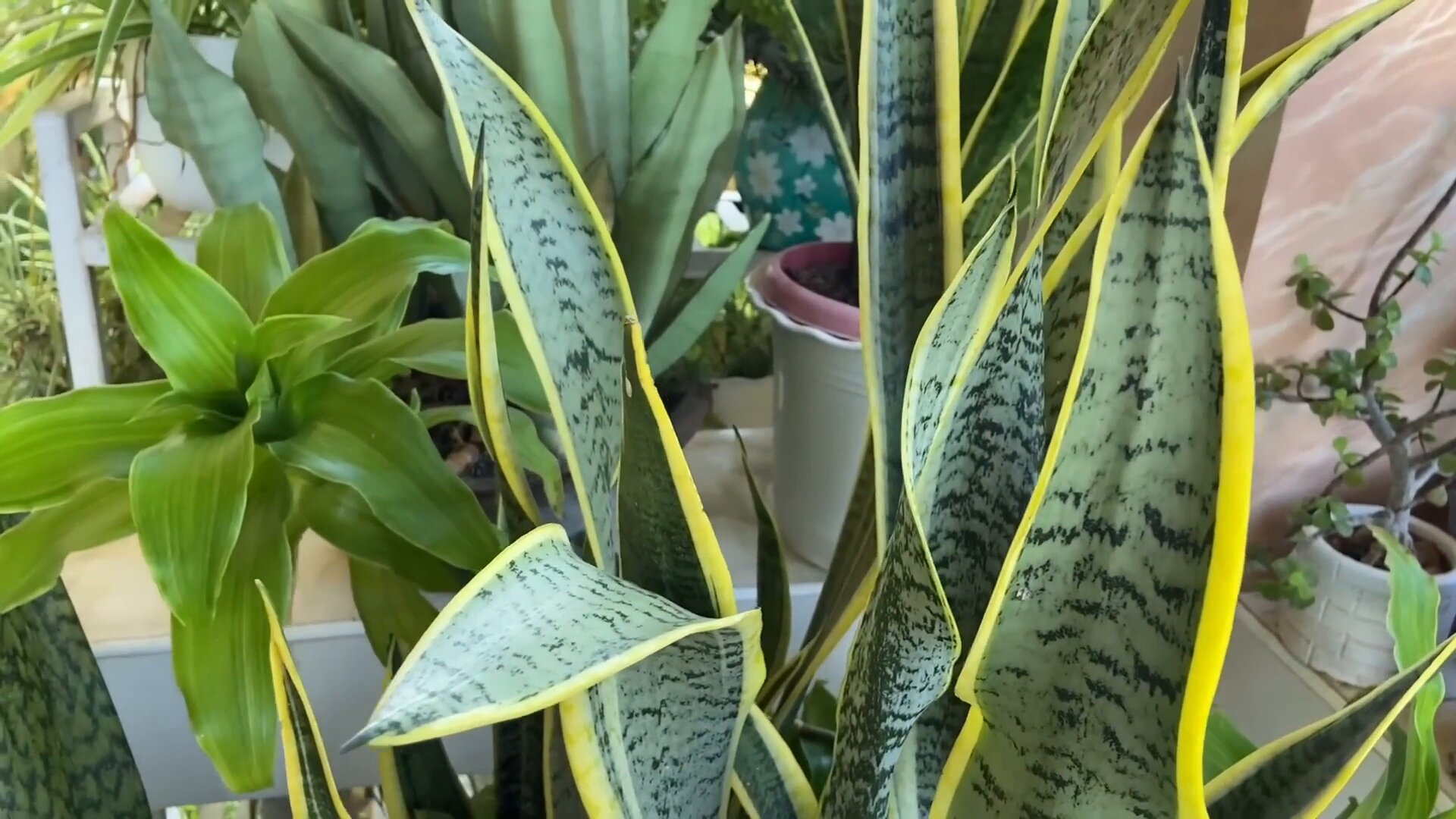What is Snake Plant? Introduction
and Overview
The Snake Plant, or Sansevieria, is a hardy and easy-to-care-for indoor plant with striking
upright leaves. Native to West Africa and part of the Araceae family, it’s often called
"Mother-in-Law's Tongue" due to the shape of its sharp, elongated leaves.
This plant not only looks great but also helps purify the air, making it a popular choice for
home gardening. It thrives in low light and needs little water, making it ideal for busy people
who want a beautiful yet low-maintenance addition to their space.
Popular Types of Snake Plant
(Sansevieria)
There are several different species of Snake Plant, each having its own unique appearance and
growth habit. It is important to understand these types so that you can choose the best variety
for you.
- Sansevieria Trifasciata: This is the most common and widely grown Snake
Plant variety. Its long, upright leaves are green with silver-grey stripes.
- Sansevieria Laurentii: Its leaves are edged with golden-yellow or yellow
stripes, making them visually appealing and eye-catching.
- Sansevieria Cylindrica: Its leaves are cylindrical and round, which gives
it a unique look.

- Sansevieria Hahnii: This is a dwarf and compact variety which is perfect
for small spaces.
- Sansevieria Moonshine: This is a unique variety with light greyish-green
and silvery-white leaves.
Snake Plant Care: How to Grow and
Maintain Your Sansevieria
Snake Plant, also known as Sansevieria, is famous for its easy care and beauty. Here are some
special care tips that will help you in its healthy growth.
Need for Light
The Snake Plant does well in indirect light and can even survive in low light. Keep it away from
direct sunlight to prevent leaf burn.

Tips to Give Water
Water only when the soil becomes dry enough. In winter months, reduce the frequency of watering.
Soil and Potting
Use well-draining soil, like a succulent or cactus mix, and ensure your pot has drainage holes.
Temperature and Humidity
This plant grows well in moderate temperatures (15°C-30°C) and can thrive in low humidity.
Use of Fertilizer
During the growing season, use a balanced liquid fertilizer monthly. No need for fertilizer in
winter.
Pruning and Propagation
Minimal pruning is required. Propagate through leaf cuttings or rhizome division.
Common Snake Plant Pests and
Diseases: How to Identify and Treat
Common pests and diseases include:
- Mealybugs: White, cottony clusters that weaken leaves. Use soapy water or
rubbing alcohol to eliminate.
- Spider Mites: Tiny insects hiding on undersides of leaves.
- Root Rot: Caused by excess watering. Check roots and trim affected ones.

- Fungal Diseases: Brown or black spots on leaves due to excess moisture.
- Scale Insects: Small, oval insects creating sticky residue on leaves.
Conclusion: Why Snake Plant is
the Perfect Indoor Plant
The Snake Plant is a versatile and low-maintenance option that brings a breath of fresh air to
your indoor space. With its simple care requirements, infrequent watering needs, and numerous
health benefits, it truly deserves a spot in any indoor garden.
別のブログを読む
FAQs: Frequently Asked Questions
About Snake Plant
Q: Can Snake Plant survive in low light?
A: Yes, they can thrive in low light
but their growth may slow down.
Q: How often should I water my Snake Plant?
A: Water every 2 to 6 weeks,
checking soil moisture first.
Q: Can Snake Plant be propagated in water?
A: Yes, by cutting leaves into
sections and letting them root.
Q: What are the best conditions for Snake Plant growth?
A: They prefer
bright, indirect light and moderate temperatures.




